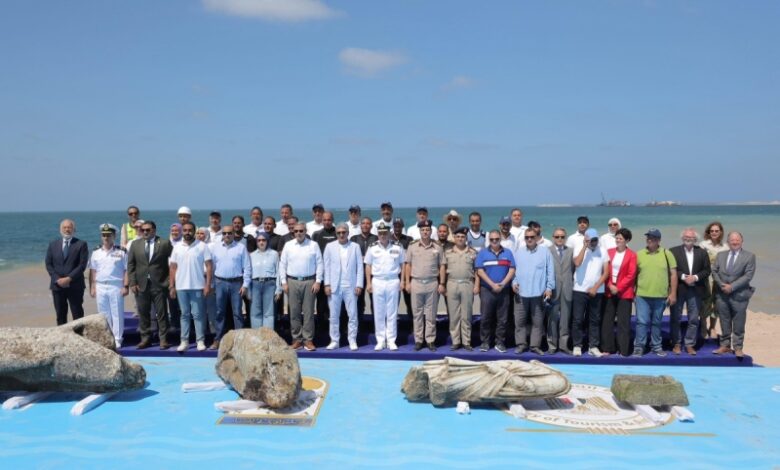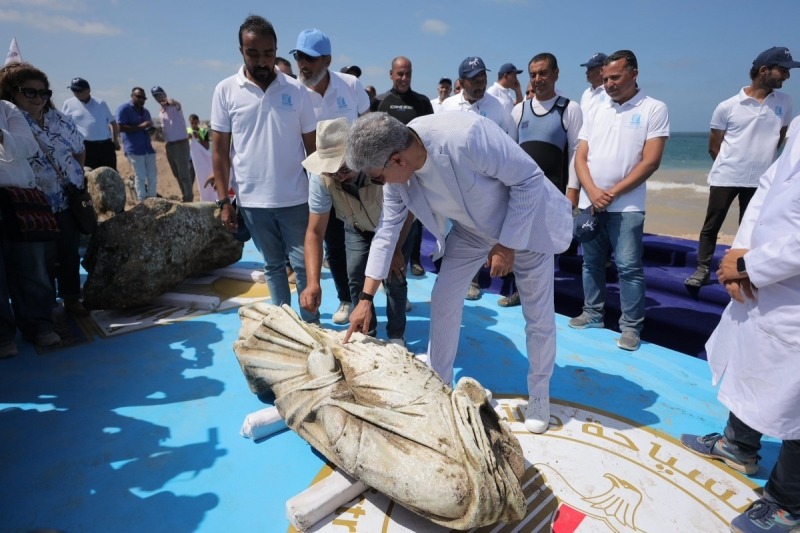
Egyptian authorities announced on Thursday the discovery of parts of a sunken ancient city off the shores of Abu Qir, east of Alexandria on the Mediterranean.
The remains include temples, water cisterns, residential buildings, statues, and a merchant ship carrying walnuts and almonds, all dating back more than two thousand years.
According to the Ministry of Tourism, the site is believed to be part of the Roman-era city that may have been an extension of Canopus, the historic administrative center of Egypt uncovered last century.

Researchers confirmed the existence of a port at the site through the recovery of anchors, along with statues such as a sphinx from the reign of King Ramses II.
Secretary-General of the General Authority for Antiquities, Mohamed Ismail, noted that the artifacts span successive eras from the Ptolemaic to the Roman period.
He explained that the findings support studies indicating that Alexandria was submerged following a massive earthquake or tsunami, which accounts for missing features on statues, such as heads or feet.
Tourism Minister Sherif Fathy highlighted that under UNESCO agreements, only certain artifacts can be moved, depending on the materials used, while the rest will remain as submerged heritage.
Large parts of Alexandria sank centuries ago due to earthquakes and rising sea levels, leaving many ancient cities underwater.
Today, the city still faces similar risks, with sea levels rising three millimeters per year due to climate change. The United Nations has warned that by 2050, one-third of Alexandria could be submerged.
Follow The Times Kuwait on X, Instagram and Facebook for the latest news updates














